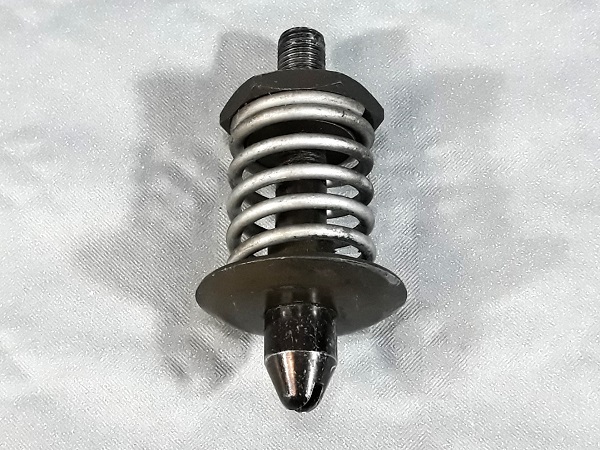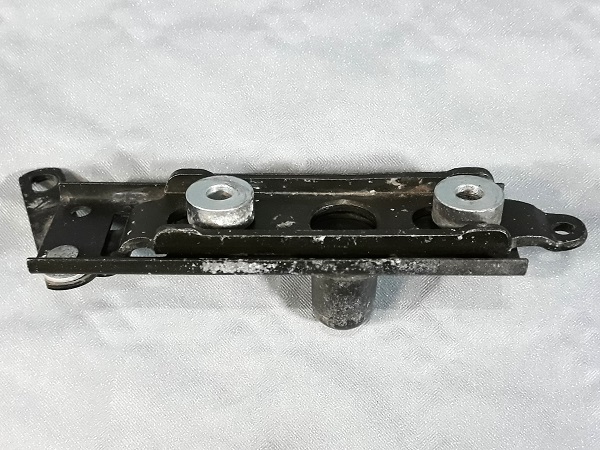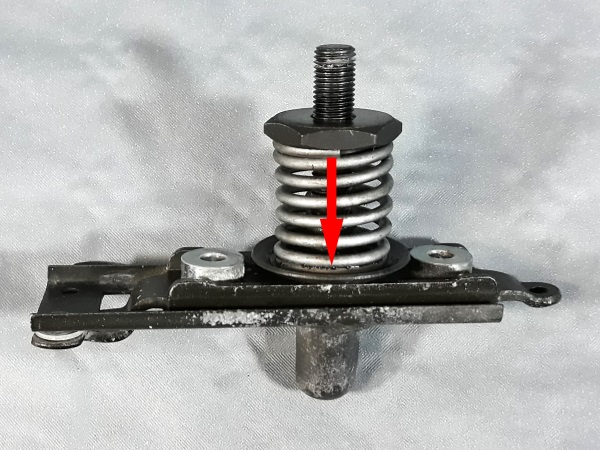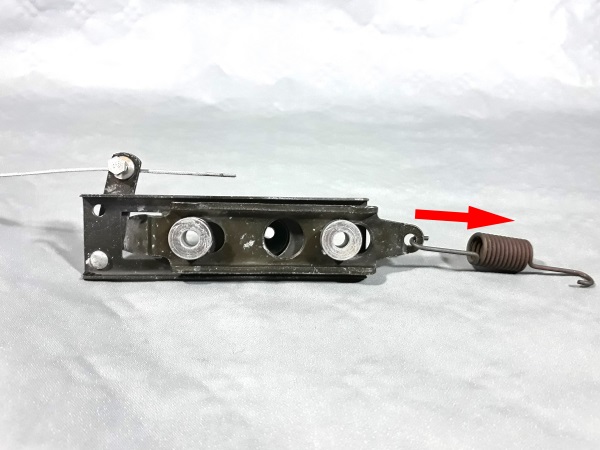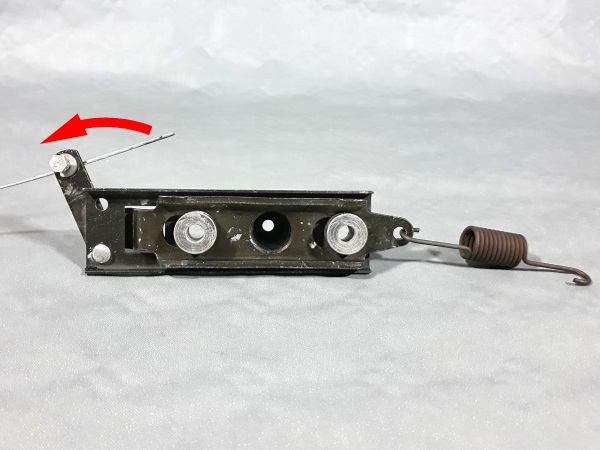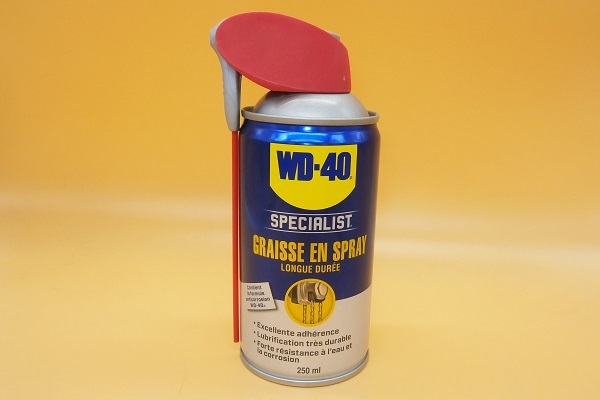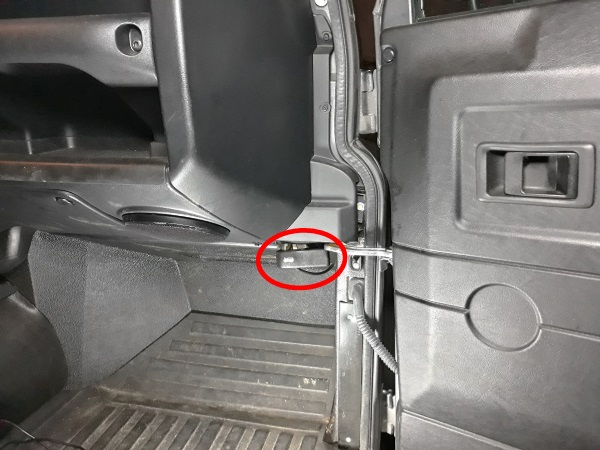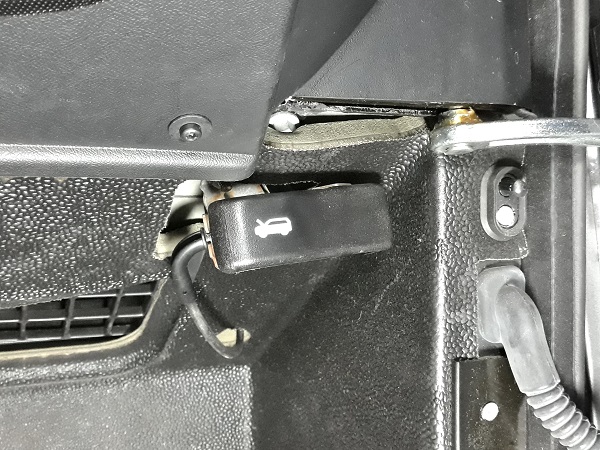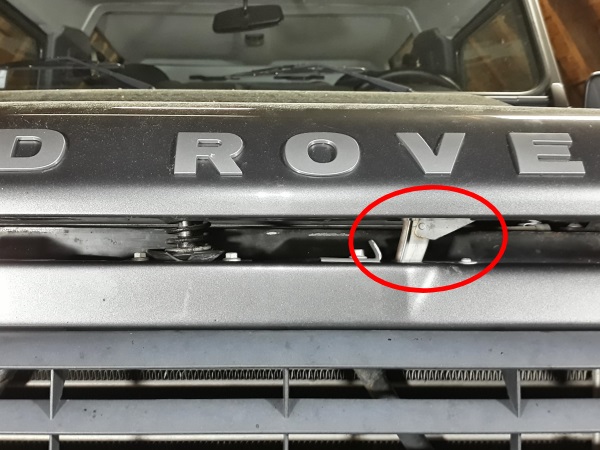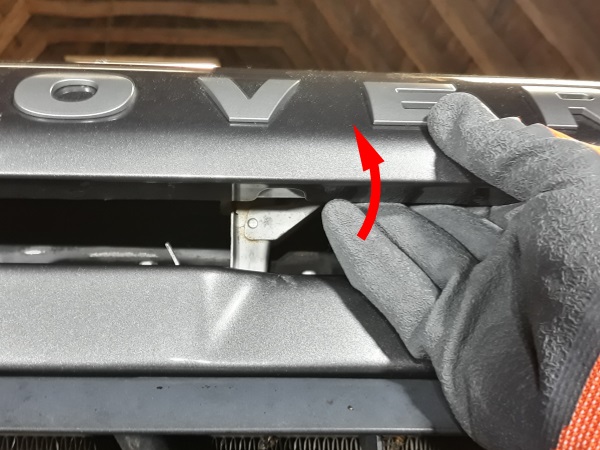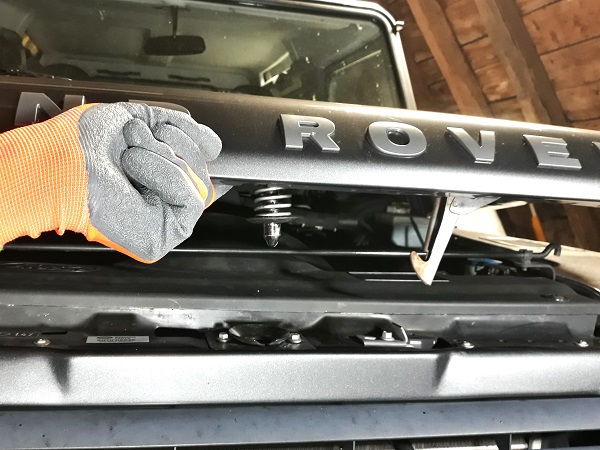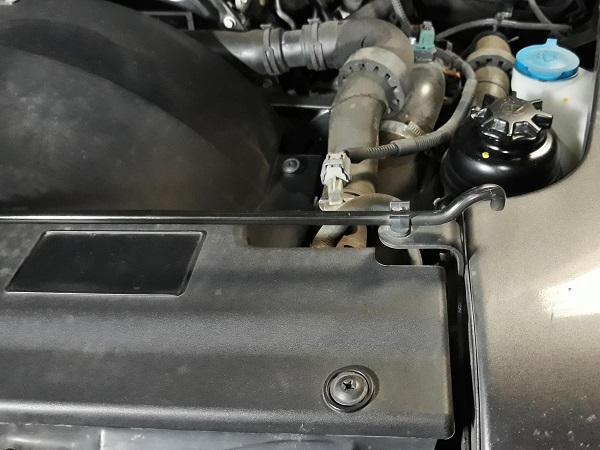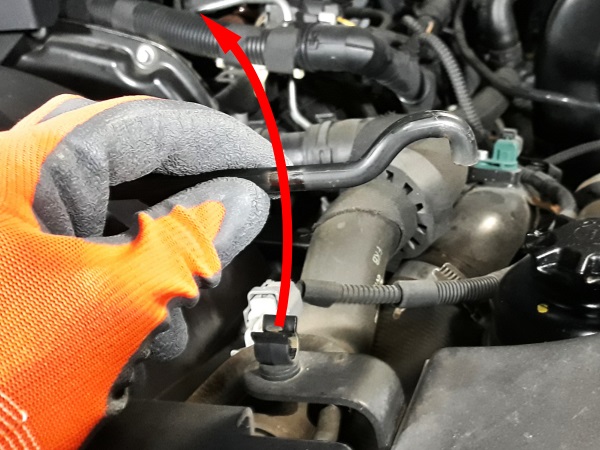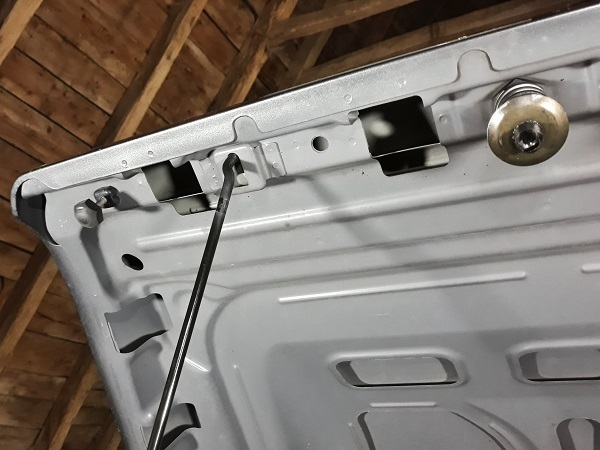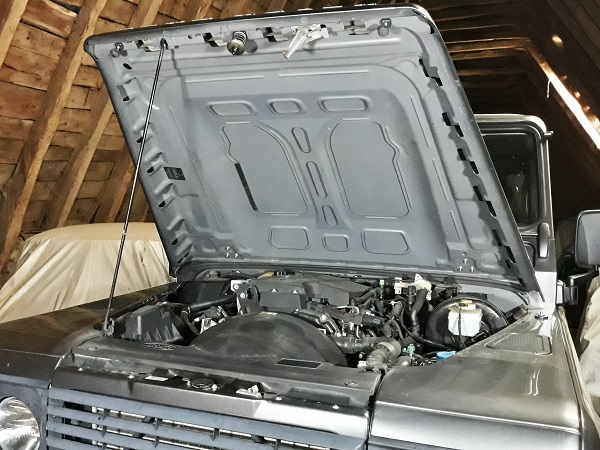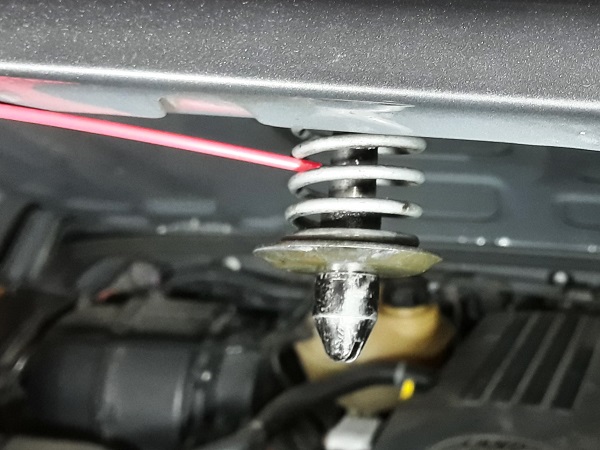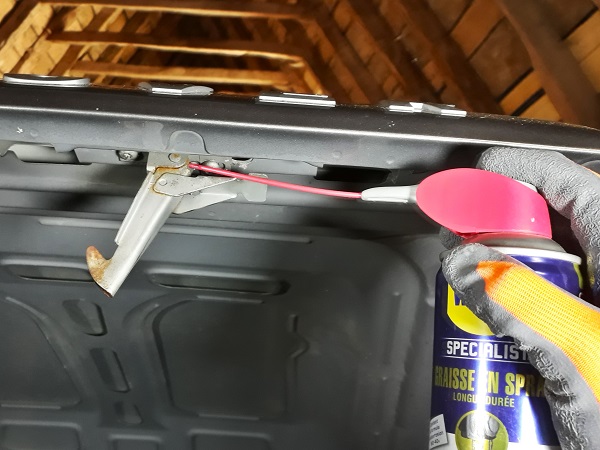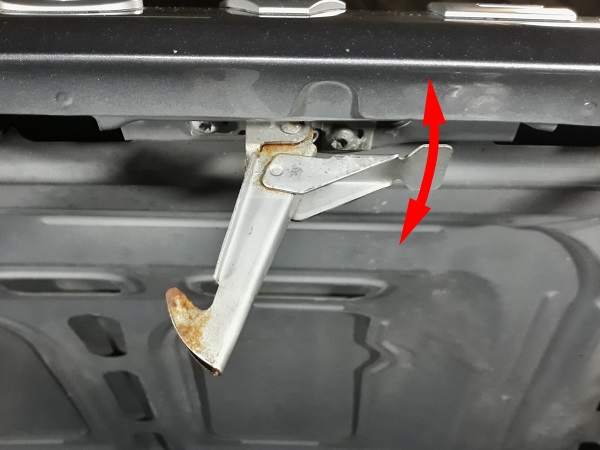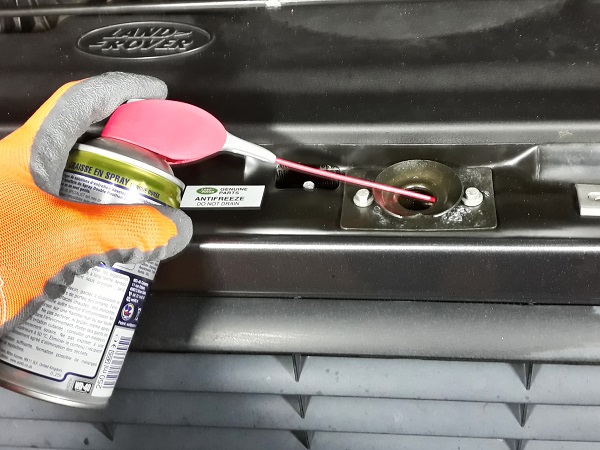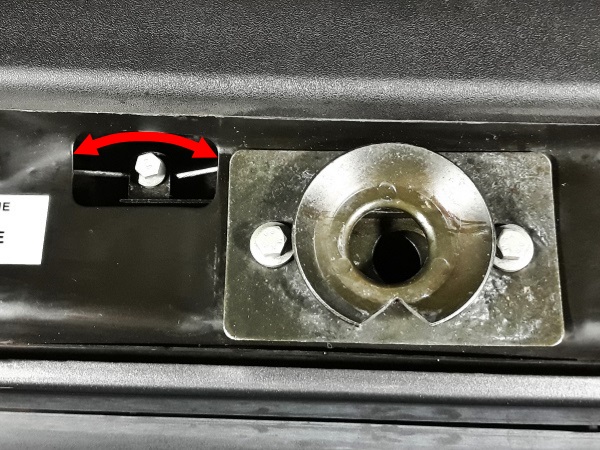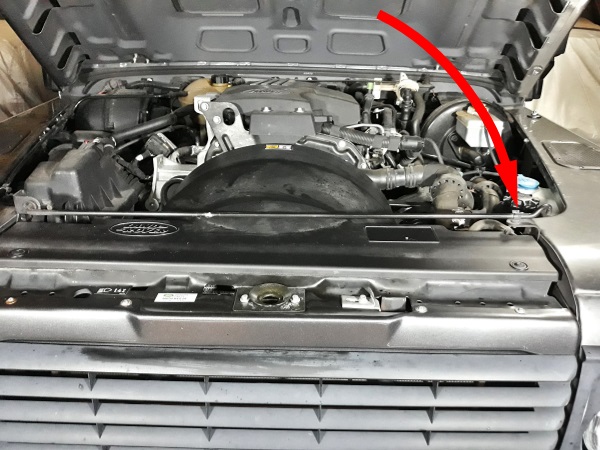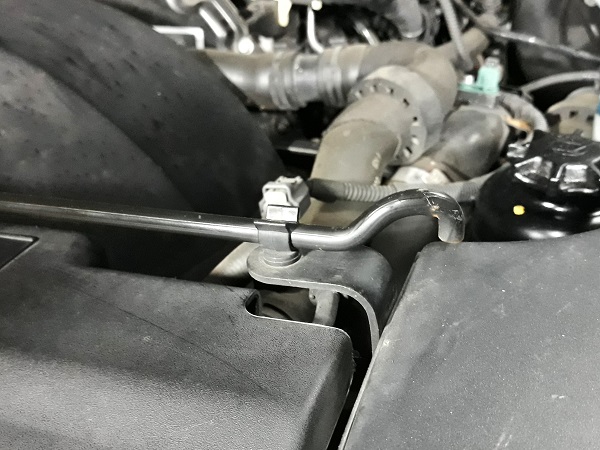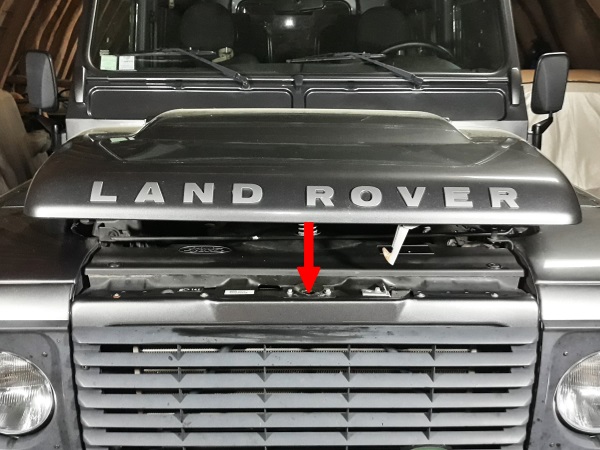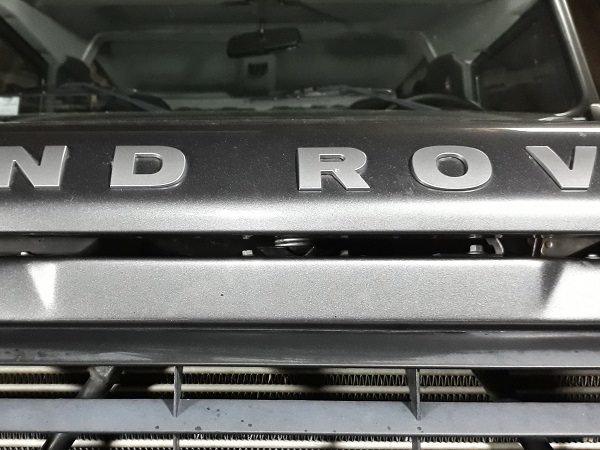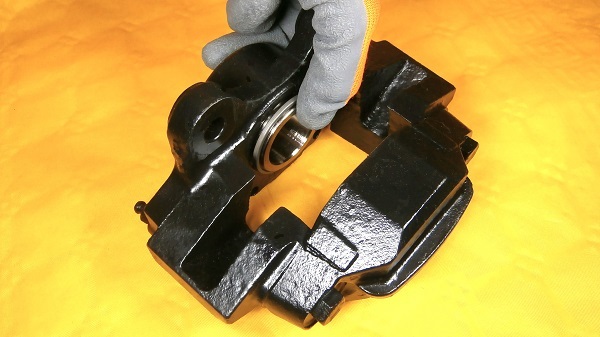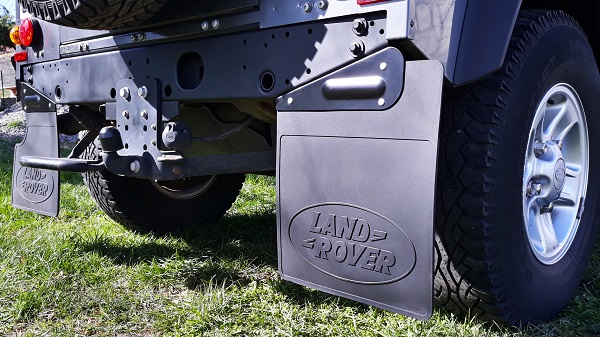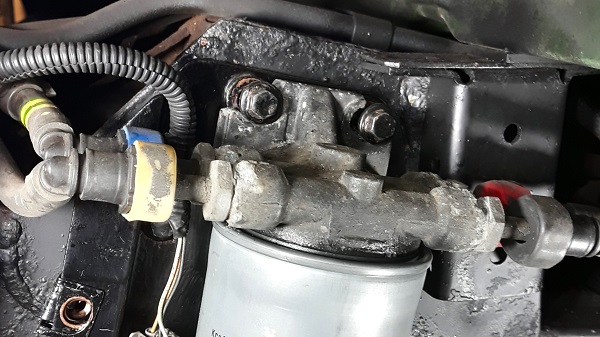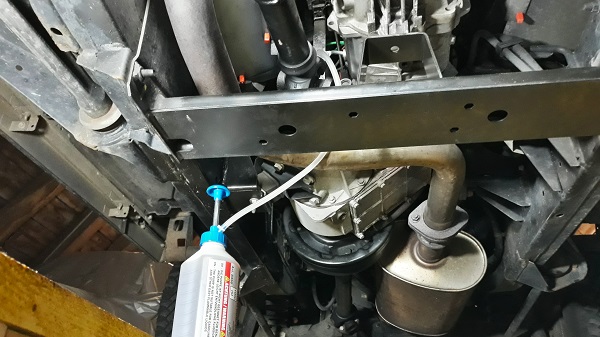Lubricate the bonnet lock on Defender
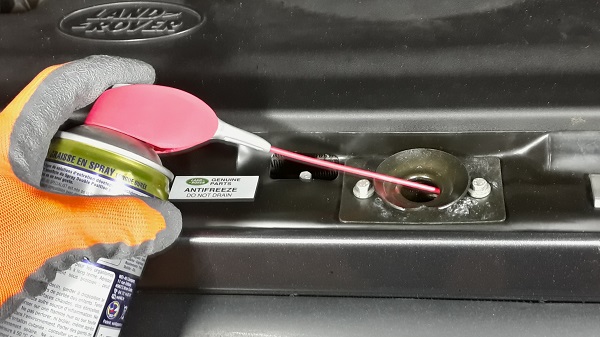
Vehicle ➔ Defender 90 Td4 2013
Difficulty ➔ Easy

Time ➔ 15 minutes
Summary

Positioned at the front of the Defender, the bonnet lock is highly exposed, not only to splashes of rainwater, but also to splashes of salt water (when we follow a vehicle in winter).
Over time, the catch tends to seize up, the striker remains stuck and the bonnet refuses to open.
The only method to prevent the bonnet from jamming is to lubricate the lock regularly.
Over time, the catch tends to seize up, the striker remains stuck and the bonnet refuses to open.
The only method to prevent the bonnet from jamming is to lubricate the lock regularly.

For lubricating the lock, we use WD40 spray grease. It is a grease that is fluid enough to penetrate the mechanism of the lock. In addition, it has very strong adhesion, does not drip and is water resistant.

What to do when the bonnet is closed and the lock remains stuck ?
Unfortunately, for safety reasons, when the bonnet is closed the lock cannot be removed.
Only one method works : spray a good dose of penetrating oil on the lock (between the bonnet and the radiator grille top panel) and wait until the next day to allow it time to work.
If it doesn't work the first time, continue until it does.
Unfortunately, for safety reasons, when the bonnet is closed the lock cannot be removed.
Only one method works : spray a good dose of penetrating oil on the lock (between the bonnet and the radiator grille top panel) and wait until the next day to allow it time to work.
If it doesn't work the first time, continue until it does.
How does a lock work ?

The bonnet lock is composed of :
• A striker (1st photo) attached to the bonnet.
• A catch (2nd photo) attached under the radiator grille top panel.
• A striker (1st photo) attached to the bonnet.
• A catch (2nd photo) attached under the radiator grille top panel.

When closing the bonnet, the striker enters the catch and is locked.

Catch operation :
• When the bonnet is closed, the catch is held in the locked position by the action of the spring (1st photo)
• When opening the bonnet, the catch is unlocked by the action of the release cable (2nd photo).
• When the bonnet is closed, the catch is held in the locked position by the action of the spring (1st photo)
• When opening the bonnet, the catch is unlocked by the action of the release cable (2nd photo).

It is this locking system that tends to seize up.
Advertisement
Open the bonnet
Op 01
Activate the bonnet release lever. Pull by hand.

When unlocking, the bonnet will lift slightly due to the action of the striker spring.
Op 02
Unlock the bonnet safety hook. Rotate it by hand.
Op 03
Open the bonnet. Lift by hand.
Position the bonnet stay.
Advertisement
Lubricate the lock
Op 04
Lubricate the striker. Use spray grease.

Lubricate the axis located in the center of the spring (2nd photo).
Op 05
Lubricate the bonnet safety hook. Use spray grease.

Operate the hook several times so that the grease penetrates the articulation axis (2nd photo).
Op 06
Lubricate the catch. Use spray grease.

Operate the release cable several times so that the grease penetrates the mechanism (2nd photo).
Advertisement
Close the bonnet
Op 07
Fold down and lock the bonnet stay.
Op 08
Close the bonnet

To lock the bonnet, place it a few centimeters from the radiator grille top panel and simply let it fall. There is no need to press on the bonnet to close it.

However, I don't know if this precept is valid when you have a spare wheel attached to the bonnet...

In the closed position, the bonnet does not come into contact with the radiator grille top panel. It is positioned a few millimeters above (3rd photo).
The End




